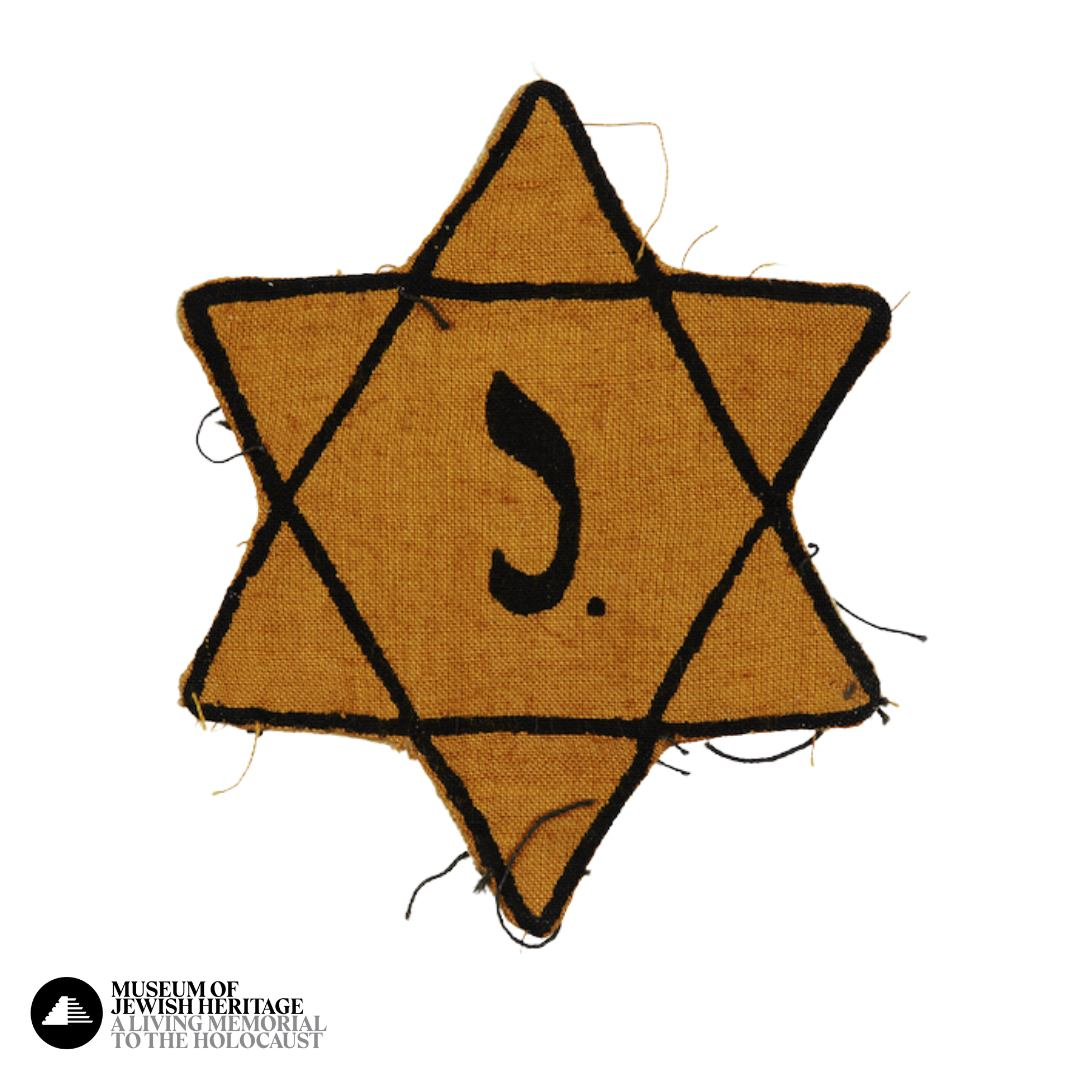Perspectives on the Holocaust
 |
| In Belgium, yellow stars had a “J” styled to look like Hebrew lettering. Jews were also required to carry an identification card stamped with the word “Jew” in Flemish and French. |
Before Tisha B'Av I check out a number of Holocaust books. I don't always get through all of them. This year, the one I did get through was We Are Here: Memories of the Lithuanian Holocaust. The title dre my attention because my mother's family hailed from LIthuania. (Her father had a rabbinic position in Switzerland during WWII, so they -- and my mother's aunt who joined to help the young and growing family out and put her dreams of training to become a doctor in Germany on hold --were safe, though her grandparents perished.)
The frame of the book is the author's trip to Vilna for an immersive Yiddish course that seems to extend for several weeks. While she's there, she learns about the Lithuanian white armbands who enthusiastically aided the Nazis against the Jews, the bystanders who refused to see and get involved, the people who helped and hid Jews, and the Jews in positions like policemen.
She grapples with moral questions of guilt, complicity, and the belittling of Jewish victimhood in various forms of revisionist history from the Soviets who controlled Lithuania through much of the 20th century to the Lithuanians she met who would quickly add a "but" on to any apology for the Holocaust.
The book gives a deeper history into one particular area that was hard hit by the Holocaust and the political climate that shifted Lithuania from Soviet to German to Soviet control. Some Jews who managed to survive the Holocaust weren't able to survive Siberia. When the iron curtain finally lifted, most Jews remaining in Lithuania left, which is why the Jewish population is particularly small at present.
For more of an overview of the Holocaust outside of books with an honest account of the failure of the Allies in general and America in particular, I recommend a visit to the Museum of Jewish Heritage- A Living Memorial to the Holocaust in NYC. I have to say that it did a much better job than I expected, not diminishing the Holocaust to an "all lives matter" statement against hate and racism and honestly pointing out the failure of the Allies in general and America in particular to act ot to save lives they knew were in danger.
Jewish immigrants were turned away from Allied countries whose conference about doing something to address the problem accomplished nothing other than a commitment by the Dominican Republic to take in Jews as farmers. England and the US used the excuse that they couldn't be sure that refugees weren't really spies. Ironically, though the US discovered that the refugees it took in who spike German were a huge asset in infiltrating the enemy and discovering vital intelligence. Those servicemen were trained in Camp Ritchie and became known as Ritchie boys.
The Museum also admits that Americans were not immune to hateful lies like Protocols of the Elders of Zion, a plagiarized work constructed as fiction that is upheld by antisemites even today as a true account of the Jewish plans for world domination. It also includes an exhibits on Henry Ford who put out his own anti-Jewish propaganda and lost a libel lawsuit to Aaron Sapiro.
There are many videos with accounts from survivors, as well as first-hand recollections from camp liberators throughout the museum. Some of them describe or show the objects in the cases next to the video screens -- like a besamim box presented to one of the soldiers that he donated to the museum. One account I caught on the third floor was from a survivor who had been under Oskar Schindler's protection. She wanted to add on a point of credit omitted from the film: he gave a pack with clothes, vodka, and some other items to the Jews upon leaving, so they shouldn't be empty-handed.
If you pay attention to the antisemitism that is increasingly and more openly being expressed today, especially on social media in the guise of "anti-Zionism," you notice striking similarities to the same tropes used since Medieval times -- blood libels and insinuations that Jews pose a danger to gentiles to justify their persecution. The calls to boycott Jewish stores and strip Jewish professionals of their credentials in Nazi Germany have their echoes in demands for BDS today. One of the videos also just touches on how the antisemites themselves proved that Jews are not welcomed anywhere.
One survivor recounted going to synagogue with his father when the Nazis were in power and seeing a sign with a swastika and a star of David that told Jews to leave for Jerusalem. His father turned to him and said something like this: "Perhaps that person is doing me a favor in giving me this suggestion."
The problem then was that the British Mandatae was in control, and that severely limited immigration. But some Jews found a way. Some who made aliya even returned to Europe to heroically fight against the Nazis.
Comments